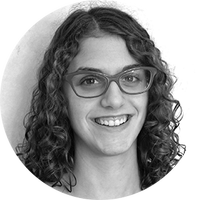Why Nike's self-lacing shoes could herald sports' cyborg future
The next step is designing smart wear that makes you a better athlete


The Chicago Cubs may not have won the 2015 World Series, but that doesn't mean all of Back to the Future Part II's predictions were off base. In March, Nike unveiled self-lacing shoes that look a whole lot like Marty McFly's. They even gave the first pair to Michael J. Fox.
Called the HyperAdapt 1.0, the shoe is expected to be available to Nike+ members in time for the 2016 holiday season. The sneaker is a genius feat of marketing, yes, but it's also a surefire sign of the promising performance-enhancing developments to come in smart gear and apparel.
"Nike's approach to shoes that can tighten on you is the first step in the conversation of having clothing that can work for you," said Brad Holschuh, co-director of University of Minnesota's Wearable Technology Laboratory. "That's a completely untapped area that I think will really change what it means to wear something."
The Week
Escape your echo chamber. Get the facts behind the news, plus analysis from multiple perspectives.

Sign up for The Week's Free Newsletters
From our morning news briefing to a weekly Good News Newsletter, get the best of The Week delivered directly to your inbox.
From our morning news briefing to a weekly Good News Newsletter, get the best of The Week delivered directly to your inbox.
Nike's next goal sounds even cooler. The company wants to create sneakers that can tighten or loosen based on the wearer's preferences and activities, without any user input at all.
Nike's team is far from the only one working toward automation in smart apparel. Automation in this case means taking the data that tracking companies are already collecting through smart clothing — how salty users' sweat is and what that means about hydration, how hard muscles are working, and more — and using that data to create clothing that can act on its own to enhance performance.
"The next question is, what do you do with it?" said Jessica Deneweth, director of the Michigan Performance Research Laboratory. "It's one thing to have the data, but how do you use it?"
Eventually, clothes and gear will be able to sense athletes' movements and respond accordingly. Advancements like these have the potential to change running, other sports, and even health care for the better.
A free daily email with the biggest news stories of the day – and the best features from TheWeek.com
Along with his colleagues, Holschuh, who until recently designed spacesuits at MIT, is working on developing a variety of types of smart apparel. Clothes that compress on their own to treat injuries, or that amplify strength in joints, are two innovations that could help everyday people.
Specific activities also call for different garments, Holschuh said, like clothing specially designed for load maintenance in weight lifting, or aerodynamic ski suits that adjust in different environments to minimize drag. Far into the future, he said, smart clothing could even replace entire wardrobes.
"You don't need 100 different items in your wardrobe to produce 100 different looks," Holschuh said. "You can plug in whatever effect you want for that day, and it changes."
Smart apparel, for all its potential to increase performance, has a few obstacles to overcome. It's hard to say what sports leagues and major competitions will one day permit. For example, the world's best ski suits might not do athletes much good if Olympics officials decide they're a form of cheating.
Beyond regulations, there's a bigger barrier smart apparel designers must grapple with: fashioning it so that it blends in seamlessly with normal clothing.
"We're trying to avoid gadgetry," Holschuh said. "We don't want to be strapping circuit boards to your chest and calling that wearable technology. That's another huge risk or challenge in terms of design. It's one thing to have capability. It's another thing to have it in a form that's acceptable."
Social acceptance is key. Professional athletes might be willing to wear whatever it takes to boost their performance, but most people who leisurely jog around their neighborhoods or play in intramural basketball leagues would not.
Essentially, technology can be accepted only so much if it looks totally silly. Researchers and designers don't want smart apparel to go the way of Google Glass.
"You don't want to turn someone off of your brand because you're doing things that they don't understand and they don't appreciate," Deneweth said. "The company that will succeed is the one that can provide this unique solution that maximizes value to the consumer. It may not have to be the most tech-savvy, but it has to be the most usable and meaningful."
Julie Kliegman is a freelance writer based in New York. Her work has appeared in BuzzFeed, Vox, Mental Floss, Paste, the Tampa Bay Times and PolitiFact. Her cats can do somersaults.
-
 How to financially prepare for divorce
How to financially prepare for divorceThe Explainer Facing ‘irreconcilable differences’ does not have to be financially devastating
-
 Why it’s important to shop around for a mortgage and what to look for
Why it’s important to shop around for a mortgage and what to look forThe Explainer You can save big by comparing different mortgage offers
-
 4 ways to save on rising health care costs
4 ways to save on rising health care costsThe Explainer Health care expenses are part of an overall increase in the cost of living for Americans
